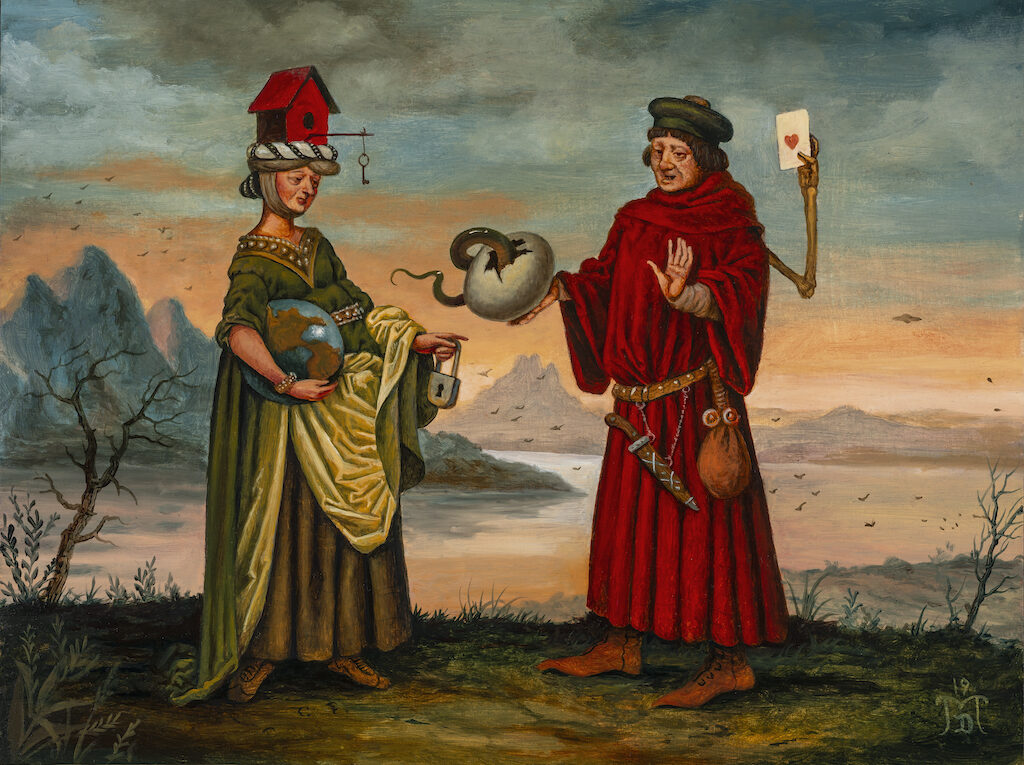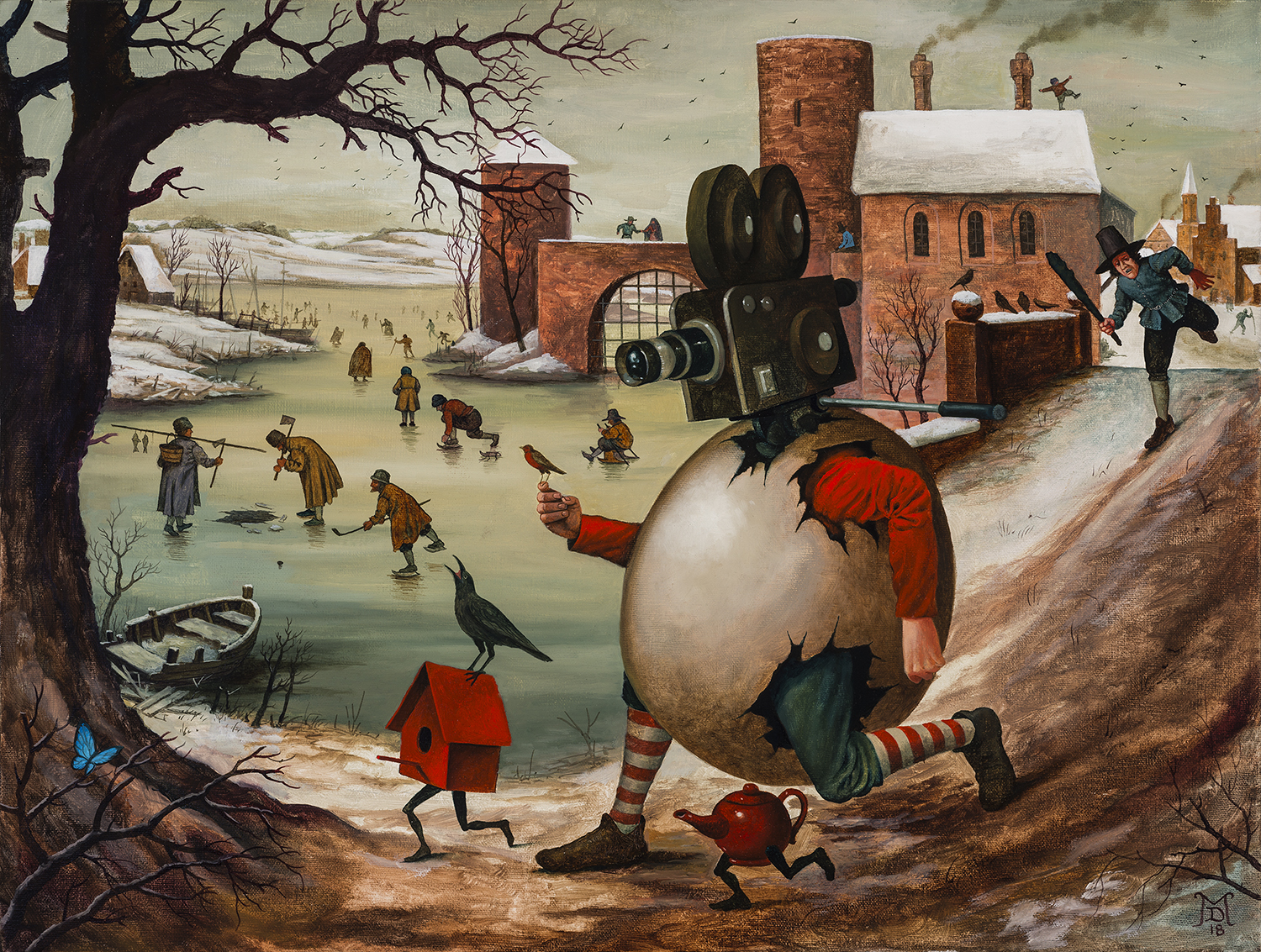
As a young girl, artist Margaret Bowland‘s favorite books and songs told stories about love and life, stories that condition girls to expect certain things out of life and want to be a certain way. Ideas about love, beauty, and personal identity are at the heart of her 19th century-inspired oil paintings, covered here. In particular, her portraits often feature the same African American girl named “J”, grandly styled with her face painted white, and attended to by white servants. She makes a reappearance in Bowland’s upcoming exhibition at Driscoll Babcock in New York, “Power”. Bowland admits that her choice to paint an African American girl with white makeup is controversial- and that is part of the point. Her works explore and discover the meaning and implications of “masking” oneself throughout history. At first, Bowland’s use of cake-white makeup was to the affect of a mask that represents her subject’s purity, just as it was worn by “the Virgin Queen”, Queen Elizabeth I. At the same time, the white represents a sort of conformity, as centuries of women have subjected themselves to society’s ideals of beauty. In Bowland’s exhibition, this expands to the male experience and that of a bride’s, painted for the sake of honoring an age-old tradition. Through all that she puts on her subjects, whether it be their makeup or costumes, Bowland finds that their personality as individuals still triumphs- they are still themselves, and that is the true meaning of “power”.
“Power” by Margaret Bowland opens at Driscoll Babcock in New York on October 29th, and will be on view through December 12th, 2015.










 Korean-born, Nevada-based artist
Korean-born, Nevada-based artist  Hyper-realist painter
Hyper-realist painter 
 In his third show at 111 Minna Gallery, Mike Davis offers new whimsical paintings that appear as a continuation of the Northern Renaissance while blending in notes of the artist’s own time period. "Crooked as a Dog's Hind Leg" kicks off on Jan. 10 and runs through Feb. 29 at the space. Davis was last featured on our site
In his third show at 111 Minna Gallery, Mike Davis offers new whimsical paintings that appear as a continuation of the Northern Renaissance while blending in notes of the artist’s own time period. "Crooked as a Dog's Hind Leg" kicks off on Jan. 10 and runs through Feb. 29 at the space. Davis was last featured on our site  The oil paintings of
The oil paintings of